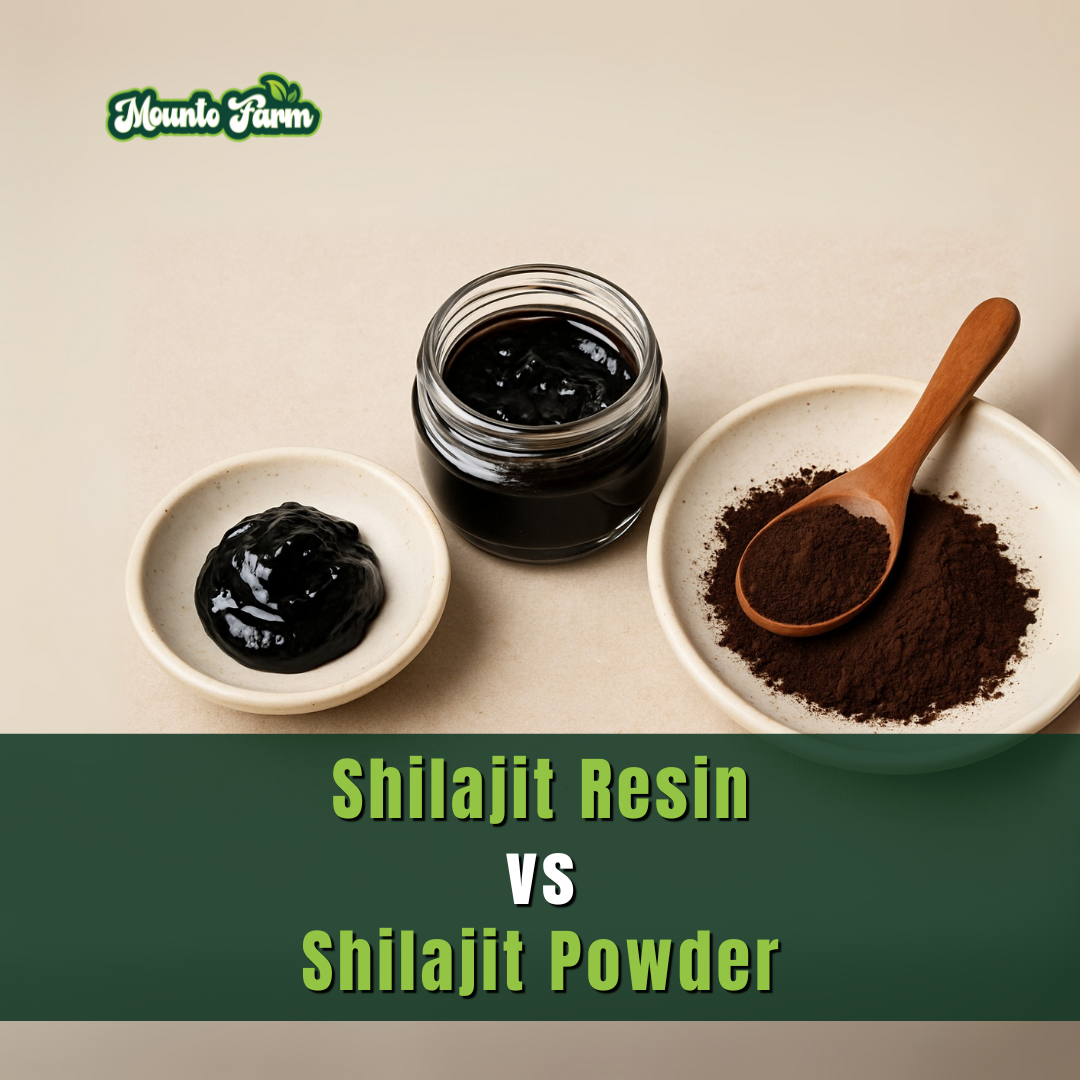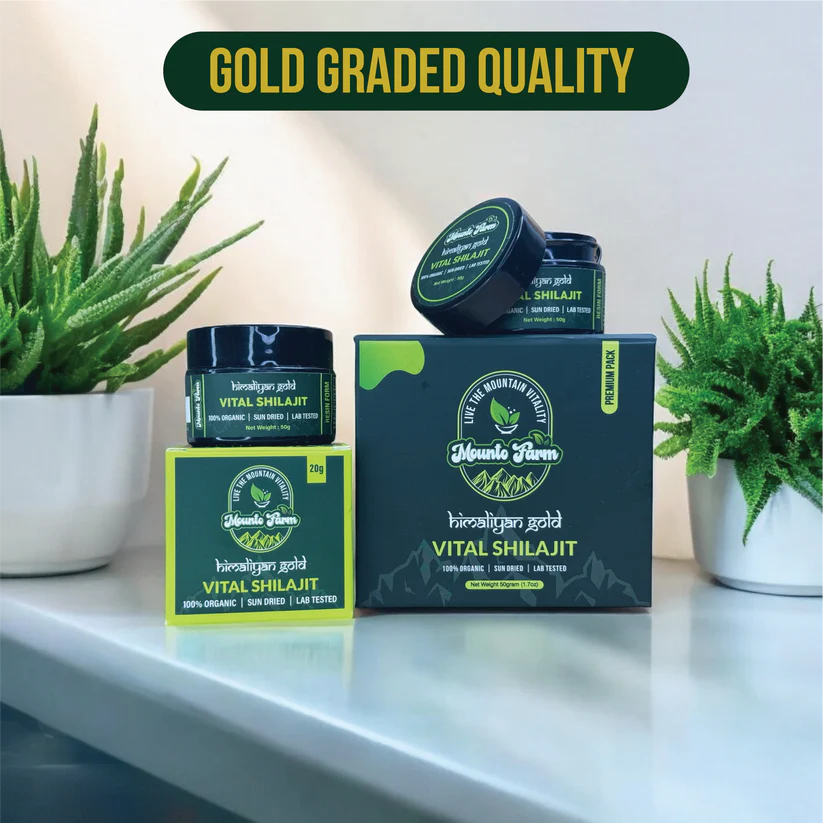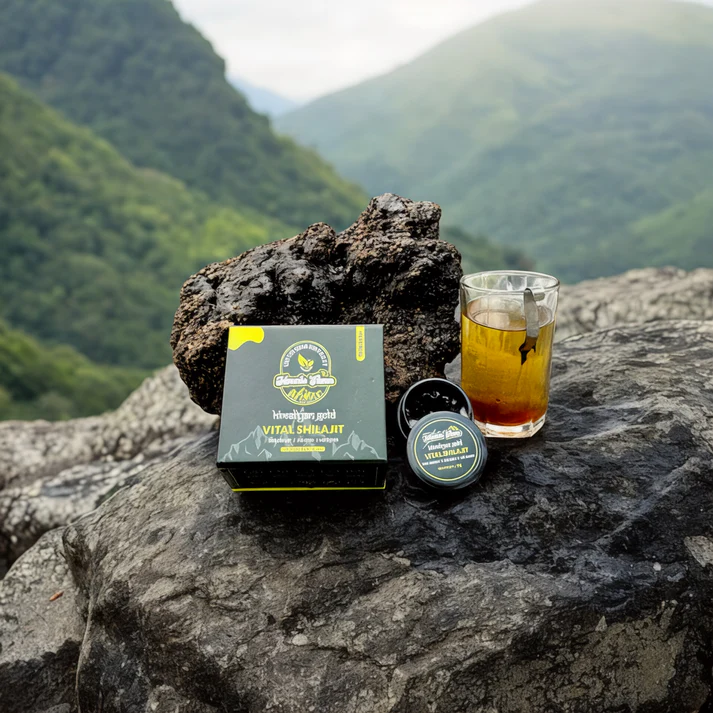Blog

Shilajit Resin vs Powder: Which Form is Right for You?
- Habib Ullah
- April 17, 2025
- 7:18 am
- No Comments
Shilajit, a potent natural substance revered in Ayurvedic medicine, has gained popularity for its potential health benefits, including boosting energy, enhancing stamina, and supporting overall wellness. Derived from the rocks of the Himalayas and other mountain ranges, shilajit is available in various forms, with resin and powder being the most common. If you’re wondering which form is better suited for your needs, this blog post compares shilajit resin vs powder to help you make an informed choice.
What is Shilajit?
Shilajit is a sticky, tar-like substance formed over centuries from the decomposition of plant matter and minerals in rocky terrains. Rich in fulvic acid, humic acid, and over 80 trace minerals, shilajit is celebrated for its adaptogenic properties, helping the body combat stress, improve vitality, and promote balance.
Shilajit Resin: The Traditional Form
What is Shilajit Resin?
Shilajit resin is the purest, least processed form of shilajit. It’s a sticky, semi-liquid substance that retains its natural consistency and potency. Harvested directly from rocks, resin undergoes minimal processing to remove impurities while preserving its bioactive compounds.
Pros of Shilajit Resin
- High Potency: Resin is the closest to its natural state, ensuring maximum concentration of fulvic acid, minerals, and other nutrients.
- Authenticity: Less processing means fewer chances of adulteration, making it a preferred choice for purists.
- Versatile Use: You can dissolve resin in warm water, milk, or tea, or take it directly in small doses.
- Longer Shelf Life: When stored properly (in a cool, dry place), resin maintains its quality for years without additives.
Cons of Shilajit Resin
- Inconvenient to Use: Measuring and dissolving resin can be messy and time-consuming, especially for beginners.
- Strong Taste: The earthy, bitter flavor may be off-putting for some users.
- Higher Cost: Due to its purity and minimal processing, resin is often more expensive than powder.
Read About the Potential Side Effect of Shilajit Resin
Shilajit Powder: The Convenient Option
What is Shilajit Powder?
Shilajit powder is created by drying and grinding shilajit resin into a fine, dry form. It’s often mixed with carriers or stabilizers to improve texture and shelf life, making it easier to incorporate into daily routines.
Pros of Shilajit Powder
- Ease of Use: Powder is simple to measure and mix into smoothies, protein shakes, or capsules, ideal for those with busy lifestyles.
- Milder Taste: The processing often reduces the intense bitterness, making it more palatable.
- Cost-Effective: Powder is generally more affordable than resin, appealing to budget-conscious consumers.
- Portability: Powder is lightweight and easy to carry, perfect for travel or on-the-go use.
Cons of Shilajit Powder
- Lower Potency: Processing can reduce the concentration of active compounds like fulvic acid, potentially lowering effectiveness.
- Risk of Adulteration: Some powders may contain fillers, additives, or low-quality shilajit, so sourcing from reputable brands is crucial.
- Shorter Shelf Life: Powder may degrade faster than resin, especially if exposed to moisture or air.
Key Differences: Shilajit Resin vs Powder
| Aspect | Shilajit Resin | Shilajit Powder |
|---|---|---|
| Form | Sticky, semi-liquid | Fine, dry powder |
| Processing | Minimal | Dried and ground, may include additives |
| Potency | Higher (rich in bioactive compounds) | May be lower due to processing |
| Ease of Use | Requires dissolving, can be messy | Easy to mix or encapsulate |
| Taste | Strong, bitter | Milder, more palatable |
| Cost | More expensive | More affordable |
| Shelf Life | Longer (if stored properly) | Shorter, sensitive to moisture |
Which Should You Choose?
The choice between shilajit resin and powder depends on your preferences, lifestyle, and health goals:
- Choose Shilajit Resin If:
- You prioritize purity and potency.
- You’re comfortable with the traditional method of use.
- You don’t mind the strong taste or higher price for maximum benefits.
- You’re using shilajit for specific therapeutic purposes, such as improving energy, cognition, or hormonal balance.
- Choose Shilajit Powder If:
- Convenience and portability are important to you.
- You prefer a milder taste or want to mix shilajit into recipes.
- You’re on a budget or new to shilajit and want to start with a more affordable option.
- You value ease of use over absolute potency.
Tips for Choosing Quality Shilajit
Regardless of the form, quality matters. Here’s how to ensure you’re getting authentic shilajit:
- Check Purity: Look for lab-tested products with certificates of analysis (COA) to verify fulvic acid content and absence of contaminants like heavy metals.
- Source Matters: Opt for shilajit sourced from high-altitude regions like the Himalayas, Altai, or Andes for authenticity.
- Avoid Additives: For powder, ensure no unnecessary fillers or artificial ingredients are included.
- Reputable Brands: Purchase from trusted suppliers with transparent sourcing and manufacturing practices.
How to Use Shilajit
- Resin: Dissolve a pea-sized amount (about 100-300 mg) in warm water, milk, or tea. Take once or twice daily, preferably on an empty stomach.
- Powder: Mix 300-500 mg into smoothies, coffee, or water, or use pre-measured capsules. Follow the dosage instructions on the product label.
Note: Consult a healthcare professional before starting shilajit, especially if you have medical conditions or are on medications.
Final Thoughts
Both shilajit resin and powder offer unique benefits, and neither is inherently “better” than the other—it all boils down to your priorities. If you value tradition, potency, and don’t mind a bit of prep, shilajit resin is the way to go. If convenience, affordability, and ease of use are key, shilajit powder might be your best bet. Whichever you choose, prioritize quality and consistency to unlock the full potential of this ancient superfood.
Have you tried shilajit before, or are you considering one of these forms? Share your thoughts or questions below, and let’s dive deeper into the world of natural wellness!
Disclaimer: This blog post is for informational purposes only and not a substitute for medical advice. Always consult a healthcare provider before adding supplements to your routine.
Latest Blog
How to Choose the Best Shilajit Capsule for Maximum Benefits
Best Shilajit Brands: Trusted Options for Purity and Quality
Altai Shilajit vs Himalayan Shilajit: Which One Should You Choose?
How to Choose the Best Shilajit for Testosterone and Hormone Support
Our Products
Gold Graded Quality Mountofarm Vital…
Experience the unmatched benefits of pure salajeet with Mountofarm Vital Shilajit, a powerful natural supplement sourced directly from...
Standard Quality Wholesale Shilajit –…
Buy premium Gold Graded wholesale shilajit in bulk from Skardu. Available in 1kg-10kg packs for...


